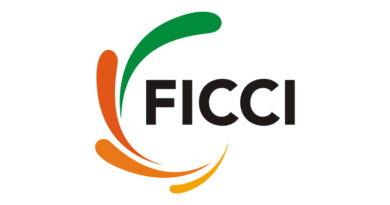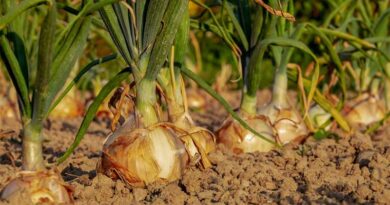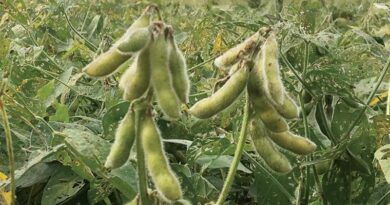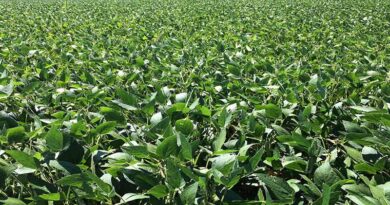Phygitalization: The fusion of physical and digital realms transforming agriculture sector
Guest Author – Mr. Sandeep Sabharwal, Founder and CEO of SLCM Group (Sohan Lal Commodity Management Pvt. Ltd.)
06 March 2024, New Delhi: Agriculture technology or agri tech as it is commonly called has enabled the farmers by improving yield, making farming easier, and making many facilities accessible. Such products, services, and applications have brought about a revolutionary change in the lives of the farmers. However, we also need to understand the digital divide in the country. According to reports published in Economics Times, only about 52% of the country’s population has internet access. In rural areas, there are more issues, as the supply of electricity is erratic and the internet hasn’t seeped into all parts of the nation.
This has created a huge digital divide, where innovative technologies for farming are being developed for everybody, but some sections are not able to access and gain benefits from them. Thus the need for phygitalization has arisen where it is necessary to create a fusion of physical and digital services, accessible to the farmers where they need it the most. Efforts are on by agri-tech companies to increase their digital footprint while amalgamating physical reach. A listing platform, launched in 2022 aims to bring together all stakeholders in agriculture, fostering transparency and collaboration. This will create an all-inclusive “Phygital” ecosystem by integrating physical centers with digitization. Currently, more than a lakh people are listed and the aim is to reach out to more than 5 lakh such stakeholders. Such a place would be ideal to share problems and solutions that each one faces.
On the other hand, Quality Checking of crops and getting them attested by an accredited lab is another task that deserves the perfect blend of physical and digital realms. Though it is a time-consuming task, where farmers travel across cities, investing both time and money, it helps them know the right valuation of their crop. To solve this problem, an app is now available that can do the QC of the crop within 5 minutes. The app connects farmers directly to a lab accredited by the National Certification Board for Testing and Calibration Laboratories (NABL). After downloading the app, a farmer uploads a photo and receives a detailed certificate within 5 minutes. Powered by AI, such software automates the testing procedure and ensures exact and speedy Quality Assessment via mobile phone. The first-ever such app has successfully facilitated 1,41,060 inspections in over 20 states and approximately 6.5 million metric tonnes of food grain.
However, only early adopters have adopted this product, even though this technology has the potential to benefit many more people. The reasons for the slow adoption of this technology vary from limited access to mobile phones to erratic internet in rural areas to a basic understanding of how the app works. However, experts have realized that there can be a solution to this problem as well. Farmers need this technology at the mandis the most since proper crop assessment can help the farmer in getting a higher price for their crop. As a phygital solution, setting up facilities similar to Suvidha Kendras will empower farmers and allow them to benefit from cutting-edge technology. A facilitator can assist these farmers by providing guidance and helping them to either learn to operate the app or get it done at the Kendra itself. This will benefit the farmers as to date there have been only a few NABL-accredited labs across the country.
In just a short time, 30 such kendras have been established at major mandis in recent months, whereas there are plans to open another 500 more such kendras soon, making the app accessible to everyone. These kendras embody a physical world, bridging the digital divide, which is essential as we approach a significant transition.
Another realm where digitization is the need of the hour is the smart storage of crops. It has been seen a 10% grain loss occurs in traditional warehouses due to malpractices and mismanagement. Smart management through AI-enabled surveillance systems has brought this figure down to 0.5% and the agri sector has the potential to save Rs 87,000 crore annually by using innovative Warehouse Management techniques. Such smart warehouses are secured with surveillance by 24×7 solar-powered cameras that ensure 24×7 supervision, and centrally-controlled AI-based systems. Now, it is possible to supervise the grains going in and going out, with time stamps through smart entry cards. Farmers can access their crops at any point in time, without the need for human intervention, enabling them to work as per their convenience and needs. When duplicated across the country, this strategy will alter farmers’ perceptions of their crop security. From our perspective, crop management predictive analytics is the way of the future.
Another issue affecting the agricultural industry is a lack of funding choices. As many as 50 percent of farmers are unable to obtain them, and those who do pay inflated interest rates, which are nearly 10 to 25 percent more than bank rates. While the crop is being harvested, the farmer requires funds to sow the following crop before the previous one is sold out. For the farmers to move away from traditional money lenders, there is a need for agri-focused NBFCs that can empower farmers by providing timely loans when they need them the most. A recent plan by an NBFC benefited at least 25,200 female agriculture and allied entrepreneurs, disbursing loans totaling Rs 2813.8 crore.
Agritech enables Indian farmers by allowing them to use technology for storage, quality control, finance, and other purposes, ultimately helping them improve their agricultural performance. However, there is a need to take the technology to the farmers and make it accessible and easy to use, if we truly want them to benefit from the same. A phygital ecosystem that can do the handholding for the farmers is the need of the hour.
Also Read: Indian Cotton Prices and Outlook for March 2024: A Mixed Bag for Cotton Producers
(For Latest Agriculture News & Updates, follow Krishak Jagat on Google News)















